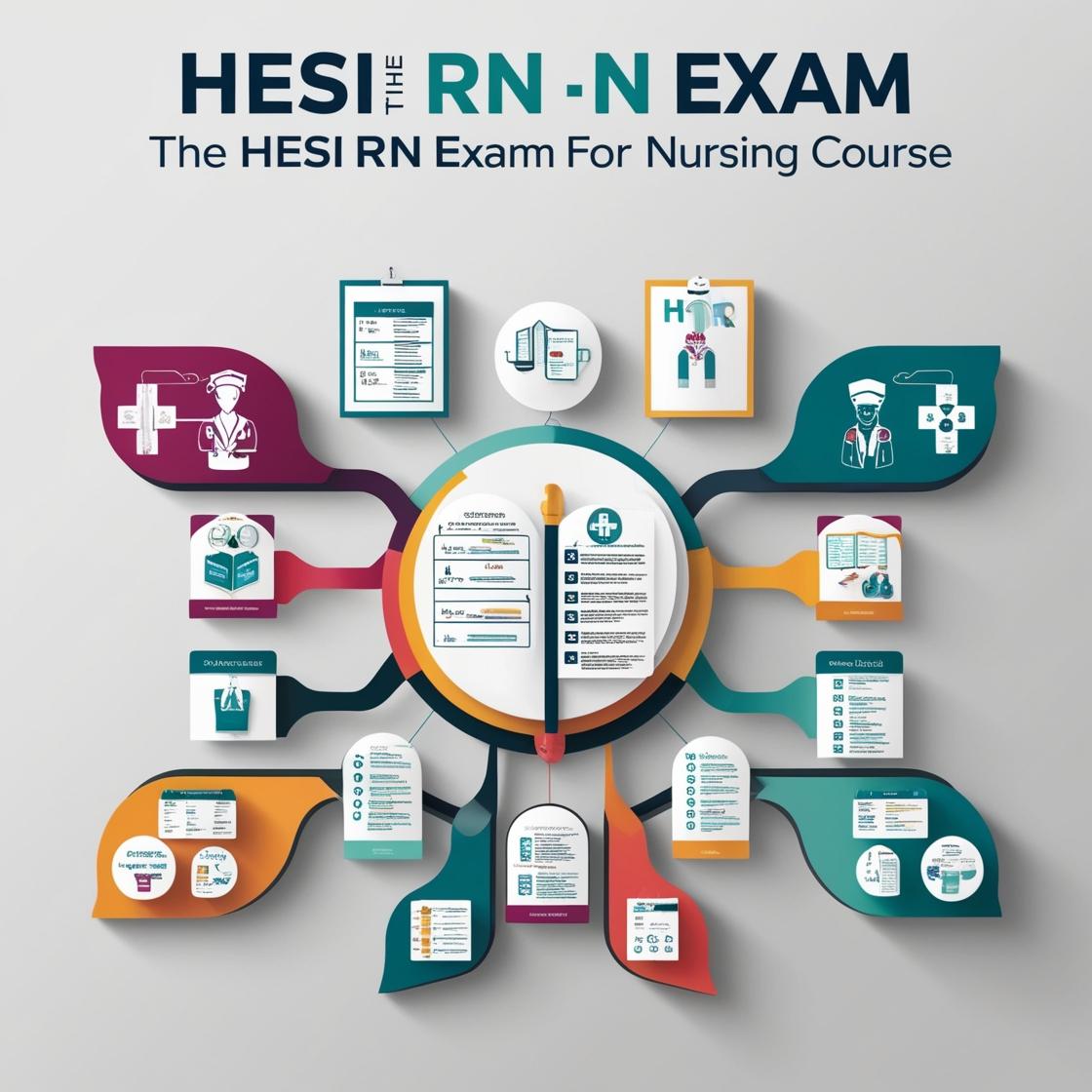HESI RN
HESI Exit Exam RN Capstone
1. A client in heart failure (HF) presents with weakness and poor urine output. Which assessment finding requires immediate action?
- A. Heart rate of 122 bpm and respiratory rate of 28.
- B. Yellow sputum expectorated.
- C. Temperature of 100.5°F (38.1°C).
- D. Shortness of breath on exertion.
Correct answer: C
Rationale: An elevated temperature may indicate infection and should be treated immediately in a client with heart failure.
2. On admission to the Emergency Department, a female client who was diagnosed with bipolar disorder 3 years ago reports that this morning, she took a handful of medications and left a suicide note for her family. Which information is most important for the nurse to obtain?
- A. Client's current mood and affect
- B. When the client last took medications for bipolar disorder
- C. History of previous suicide attempts
- D. Details of the medications ingested
Correct answer: D
Rationale: Determining the specific medications ingested is the priority for guiding immediate treatment in the Emergency Department. Knowing when the client last took medications and her current mood are also important, but the ingested medications are the most urgent information needed. The client's current mood and affect are crucial for assessing her immediate state, but the priority is to identify the substances she ingested to provide appropriate interventions. While understanding the history of previous suicide attempts is relevant for assessing the client's risk, the immediate focus should be on the medications taken during this specific incident.
3. A client with liver cirrhosis is receiving lactulose for hepatic encephalopathy. Which finding indicates the medication is effective?
- A. The client's level of consciousness improves.
- B. The client's ammonia level decreases.
- C. The client has three bowel movements daily.
- D. The client's liver enzymes return to normal.
Correct answer: B
Rationale: The correct answer is B: "The client's ammonia level decreases." In hepatic encephalopathy, elevated ammonia levels contribute to neurological symptoms. Lactulose works by promoting the excretion of ammonia in the stool, leading to decreased serum ammonia levels. Therefore, a decrease in ammonia levels indicates that lactulose is effectively reducing ammonia buildup, improving hepatic encephalopathy symptoms. Choices A, C, and D are incorrect because improvement in level of consciousness, bowel movements, or normalization of liver enzymes may not directly reflect the effectiveness of lactulose in reducing ammonia levels and improving hepatic encephalopathy.
4. The nurse is developing a teaching plan for a client receiving chemotherapy. Which of the following should be the nurse's first priority?
- A. The client will maintain adequate nutrition.
- B. The client will manage side effects of treatment.
- C. The client will recognize signs and symptoms of infection.
- D. The client will experience a reduction in pain.
Correct answer: C
Rationale: The correct answer is C. Recognizing signs and symptoms of infection should be the nurse's first priority when developing a teaching plan for a client receiving chemotherapy. Chemotherapy often compromises the immune system, making patients more susceptible to infections. Early identification and prompt treatment of infections are crucial to prevent complications. Options A, B, and D are important aspects of care but recognizing signs of infection takes precedence due to the potential life-threatening consequences in clients undergoing chemotherapy treatment.
5. A client with cirrhosis is at risk for bleeding due to impaired liver function. Which laboratory result is the most important to monitor?
- A. Blood urea nitrogen (BUN)
- B. Prothrombin time (PT)
- C. Aspartate aminotransferase (AST)
- D. Serum albumin
Correct answer: B
Rationale: Prothrombin time (PT) measures the time it takes for blood to clot and is a critical indicator of bleeding risk in clients with liver dysfunction. Impaired liver function reduces clotting factor production, leading to an increased PT, which requires close monitoring. Monitoring BUN (Choice A) is more indicative of kidney function, not clotting ability. Aspartate aminotransferase (AST) (Choice C) and serum albumin (Choice D) are important indicators of liver function, but they do not directly assess the client's bleeding risk.
Similar Questions

Access More Features
HESI RN Basic
$89/ 30 days
- 50,000 Questions with answers
- All HESI courses Coverage
- 30 days access @ $89
HESI RN Premium
$149.99/ 90 days
- 50,000 Questions with answers
- All HESI courses Coverage
- 30 days access @ $149.99
